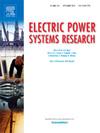Distribution system planning considering analytical reliability and regulated monopoly
IF 3.3
3区 工程技术
Q2 ENGINEERING, ELECTRICAL & ELECTRONIC
引用次数: 0
Abstract
Distribution system planning is a multifaceted topic with physical, financial and regulatory aspects. The regulator arbitrates between the end customer and the utility to ensure a fair tariff from the customers. The increased penetration of renewable energy is accelerated by Distributed Generation Corporation (DGENCO) through distributed generation. The existing distribution planning paradigms do not incorporate regulator’s rate setting process alongwith independent DGENCO. Therefore, in this paper, the distribution planning is modeled as complete information sequential game with regulator, Distribution Network Operator (DNO) and DGENCO as agents. The proposed sequential game is solved by backward induction technique which translates to a tri-level optimization problem. The regulator’s model include the rate setting process, the DNO model incorporates extensive multistage distribution expansion planning formulation including reliability constraints, whereas the DGENCO models the selling of power through the process of Power Purchase Agreement (PPA). Moreover, an analytical reliability evaluation formulation that can model the effect of tie lines and bus coupler in reliability metric is also proposed. The proposed model was solved through a Mixed Integer Bilevel Linear Program (MIBLP) framework. The multistage integer non-linear model was transformed to MIBLP through Mccormick relaxations. Distribution planning with classical regulatory models are conducted on a 6 bus system and 13 bus radial system. The large memory requirement and computation times of the proposed model as discussed. The Price Cap Regulation (RPI) was proven more conducive for implementing cost reducing technologies, whereas the Cost of Service Regulation (COSR) delivered better reliability. The proposed methodology can test the potential impact of a regulatory policy on the service quality and network upgradation.

求助全文
约1分钟内获得全文
求助全文
来源期刊

Electric Power Systems Research
工程技术-工程:电子与电气
CiteScore
7.50
自引率
17.90%
发文量
963
审稿时长
3.8 months
期刊介绍:
Electric Power Systems Research is an international medium for the publication of original papers concerned with the generation, transmission, distribution and utilization of electrical energy. The journal aims at presenting important results of work in this field, whether in the form of applied research, development of new procedures or components, orginal application of existing knowledge or new designapproaches. The scope of Electric Power Systems Research is broad, encompassing all aspects of electric power systems. The following list of topics is not intended to be exhaustive, but rather to indicate topics that fall within the journal purview.
• Generation techniques ranging from advances in conventional electromechanical methods, through nuclear power generation, to renewable energy generation.
• Transmission, spanning the broad area from UHV (ac and dc) to network operation and protection, line routing and design.
• Substation work: equipment design, protection and control systems.
• Distribution techniques, equipment development, and smart grids.
• The utilization area from energy efficiency to distributed load levelling techniques.
• Systems studies including control techniques, planning, optimization methods, stability, security assessment and insulation coordination.
 求助内容:
求助内容: 应助结果提醒方式:
应助结果提醒方式:


